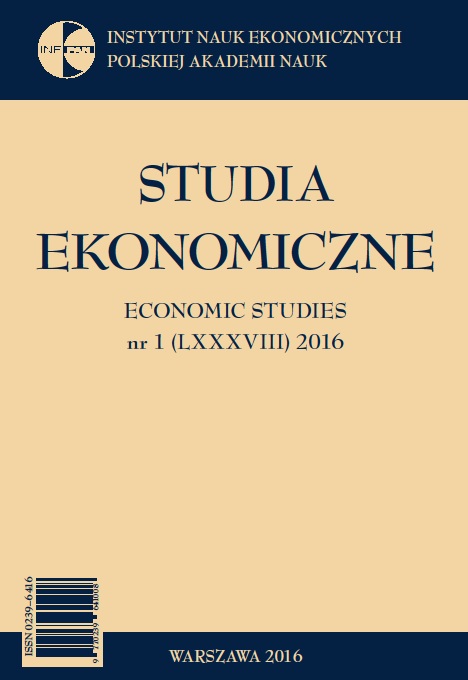Modelling health indicators in a joint framework via factor copula models
Modelling health indicators in a joint framework via factor copula models
Author(s): Martyna Kobus, Olga PółchłopekSubject(s): Economy, National Economy, Supranational / Global Economy
Published by: Instytut Nauk Ekonomicznych Polskiej Akademii Nauk
Keywords: multiple health indicators; interdependence; factor copulas; vine copulas
Summary/Abstract: The problems of ageing societies in advanced economies have recently put emphasis on the evaluation of health of the elderly. Health is likely to determine job market activity of the increasing parts of the society. Appropriate modeling of health conditions is therefore key for policymaking, in particular given that detailed health data are now available via ageing surveys. Recently, there has been increased interest in modeling multiple ordinal health data. Makdisi and Yazbeck (2014) utilize the counting approach, which requires the transformation of multiple category health indicators into binary and lead to the loss of information but also changes the dependence structure. We offer a different approach which does not have these limitations and is feasible for highdimensional data (while, for example, stochastic dominance methods are inconclusive for many dimensions (Duclos and Echevin 2012). We use recently developed methods based on so-called vine pair-copula constructions (PCC) (Aas et al. 2009). We estimate a 1-factor copula model (Nikoloulopoulos and Joe 2015) for 24 health indicators taken from English Longitudinal Study of Ageing (ELSA) such as self-reported health status, mobility, eyesight, hearing and pain rating and questions related to emotional health. We show that there are substantial interdependencies in health data which cannot be neglected by dichotomization and aggregation, nor can they be detected by the standard multivariate probit model. t(4)- and t(5)- factor copula model provides the best fi t, and items that measure general optimism are most informative of the underlying factor. Groups are most heterogeneous along the employment status, with retired and disabled groups showing signifi cantly more dependence than other groups in items related to mobility and general health status.
Journal: Studia Ekonomiczne
- Issue Year: 2016
- Issue No: 2
- Page Range: 246-285
- Page Count: 40
- Language: English

